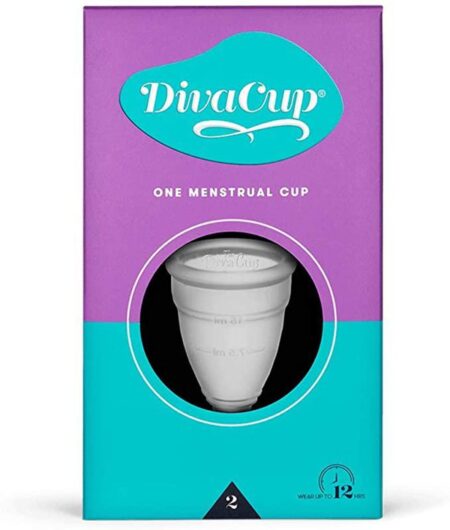

Wondering why your menstrual products—think tampons, pads, even period underwear—don’t seem to be holding up to your flow? Most aren’t tested for absorbency with actual blood, according to a recent study. As a result, doctors could be missing the opportunity to inform people that they have heavy menstrual bleeding, which can be a sign of other underlying health issues.
A report out earlier this month in BMJ Sexual & Reproductive Health found that many menstrual products had inaccurate liquid capacities compared to what the products advertised. When a team from Oregon Health & Science University tested the products with actual blood, the products didn’t absorb as much as they advertised.
As a result, the authors say doctors may not be diagnosing heavy menstrual bleeding accurately—or enough. This means women who have it may be ignored—or even unaware. Heavy bleeding can be a red flag for other serious conditions like cancer and uterine fibroids.
Doctors typically diagnose heavy bleeding, or menorrhagia, based on a visual chart, or they may ask you how often you need to change your menstrual product. If you use two or more tampons that absorb 20 milliliters (mL) of blood in a two-hour span, that’s considered a heavy flow.
Menorrhagia symptoms, according to Mayo Clinic, include:
Industry absorbency guidelines were created only using tampons. Historically, they used a liquid (saline or water) to test absorbency capacity of other menstrual products, which is not the same viscosity as blood. The standards haven’t been updated since they were created the 1980s, a whopping four decades ago.
If you use a menstrual cup now, there’s no metric to see if you have a heavy period. The cups hold about four times as much as a tampon, but because the metrics were based on tampon absorbency, it’s hard to know how to quantify your flow.
blogherads.adq.push(function(){ blogherads.defineSlot(‘flexrec’, ‘ad_div_in_body_2’).setTargeting(‘targetingKey’, ‘targetingValue’).display(); });
“We realized that there wasn’t really a metric for diagnosing heavy menstrual bleeding in folks who use those products,” study co-author Bethany Samuelson Bannow, MD, an assistant professor of hematology at Oregon Health & Science University, tells Scientific American.
“We really felt that [the absorbency metric] needed to be updated,” she adds.
It’s not only startling to find out that you may have been duped in terms of buying something that didn’t live up to the label claim. But Samuelson Bannow says it has medical implications.
“We’re probably missing a lot of heavy menstrual bleeding.”
Bethany Samuelson Bannow, MD, assistant professor of hematology at Oregon Health & Science University
Her team looked at 21 different menstrual products spanning the gamut—from maxi pads and tampons to menstrual cups and period underwear, using expired human packed red blood cells (RBCs), which could no longer be used for clinical purposes. While menstrual blood is likely to be more viscous than RBCs, the researchers believed they gave a more accurate depiction of capacity than water or saline.
Menstrual underwear—aka period panties—were the least absorbent period products on the market, soaking up just 1 to 3 mL of blood, depending on their size. (They were less absorbent than light pads, which captured 3 to 4 mL.) Depending on the size, tampons captured 20 to 34 mL of blood. Heavy and ultra tampons and pads held anywhere from 20 mL to 50 mL.
Still others were able to hold more blood than advertised, which researchers attributed to being tested with water. Heavy pads that say they can hold 10 to 20 mL actually held up to 52 mL of blood. Menstrual discs or cups held the most—the Intimina Ziggy cup held up to 80 mL while the average held 61 milliliters.
To get a better idea of what your actual flow looks like, take note of how often you change your period products or have to double up on period protection. Ask your doctor if they suspect heavy menstrual bleeding based on what you tell them, pointing to this study. If you’ve raised concerns before about your menstrual flow and been dismissed, it may be time to get a second opinion.
blogherads.adq.push(function(){ blogherads.defineSlot(‘flexrec’, ‘ad_div_in_body_1’).setTargeting(‘targetingKey’, ‘targetingValue’).display(); });
Original Article Source | Author
Welcome to Sun Blocked, Refinery29’s global call to action to wake up to the serious… Read More
What was it like when you met your partner for the first time? Did you… Read More
Surprise! The popular Kendra Scott x LoveShackFancy jewelry collection from 2024 has been restocked. The… Read More
You don’t have to search very long to find plenty of TikTok-famous, viral beauty brands… Read More
Emily Jamea, Ph.D., is a sex therapist, author of the USA Today Best-Selling book, Anatomy… Read More
Welcome to Sun Blocked, Refinery29’s global call to action to wake up to the serious dangers… Read More